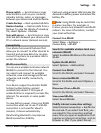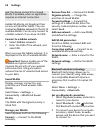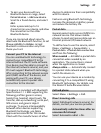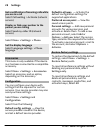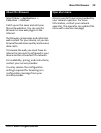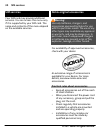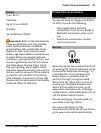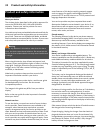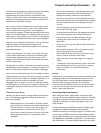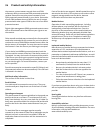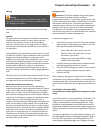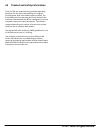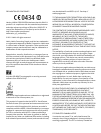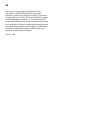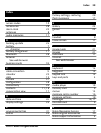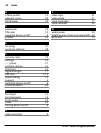
the content, content owners may ask that such DRM
software's ability to access new DRM-protected content be
revoked. Revocation may also prevent renewal of such
DRM-protected content already in your device. Revocation
of such DRM software does not affect the use of content
protected with other types of DRM or the use of non-DRM-
protected content.
Digital rights management (DRM) protected content comes
with an associated licence that defines your rights to use
the content.
Other transfer methods may not transfer the licences which
need to be restored with the content for you to be able to
continue the use of OMA DRM-protected content after the
device memory is formatted. You may also need to restore
the licences in case the files on your device get corrupted.
If your device has WMDRM-protected content, both the
licences and the content will be lost if the device memory is
formatted. You may also lose the licences and the content
if the files on your device get corrupted. Losing the licences
or the content may limit your ability to use the same content
on your device again. For more information, contact your
service provider.
Some licences may be connected to a specific SIM card, and
the protected content can be accessed only if the SIM card
is inserted in the device.
Additional safety information
The surface of this device is nickel-free.
Small children
Your device and its accessories are not toys. They may
contain small parts. Keep them out of the reach of small
children.
Operating environment
This device meets RF exposure guidelines in the normal use
position at the ear or at least 1.5 centimetres (5/8 inch)
away from the body. Any carry case, belt clip, or holder for
body-worn operation should not contain metal and should
position the device the above-stated distance from your
body.
To send data files or messages requires a quality
connection to the network. Data files or messages may be
delayed until such a connection is available. Follow the
separation distance instructions until the transmission is
completed.
Parts of the device are magnetic. Metallic materials may be
attracted to the device. Do not place credit cards or other
magnetic storage media near the device, because
information stored on them may be erased.
Medical devices
Operation of radio transmitting equipment, including
wireless phones, may interfere with the function of
inadequately protected medical devices. Consult a
physician or the manufacturer of the medical device to
determine whether they are adequately shielded from
external RF energy. Switch off your device when regulations
posted instruct you to do so. Hospitals or health care
facilities may use equipment sensitive to external RF
energy.
Implanted medical devices
Manufacturers of medical devices recommend a minimum
separation of 15.3 centimetres (6 inches) between a
wireless device and an implanted medical device, such as a
pacemaker or implanted cardioverter defibrillator, to avoid
potential interference with the medical device. Persons who
have such devices should:
• Always keep the wireless device more than 15.3
centimetres (6 inches) from the medical device.
• Not carry the wireless device in a breast pocket.
• Hold the wireless device to the ear opposite the
medical device.
• Turn the wireless device off if there is any reason to
suspect that interference is taking place.
• Follow the manufacturer directions for the implanted
medical device.
If you have any questions about using your wireless device
with an implanted medical device, consult your health care
provider.
Hearing aids
Some digital wireless devices may interfere with some
hearing aids.
Accessibility solutions
Nokia is committed to making mobile phones easy to use
for all individuals, including those with disabilities. For more
information, visit the Nokia website at
www.nokiaaccessibility.com.
34 Product and safety information
© 2011 Nokia. All rights reserved.



